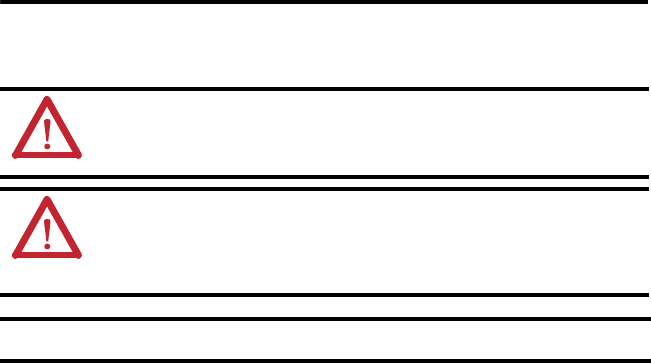
PowerMonitor 1000 Unit 3
Rockwell Automation Publication 1408-IN001E-EN-P - September 2013
Safety
About the PowerMonitor 1000 Unit
The power monitor is a compact, cost-effective, electric power and energy metering device
intended for use in industrial control applications, such as distribution centers, industrial control
panels, and motor control centers. It measures voltage and current in an electrical circuit,
meeting revenue accuracy standards. It communicates power and energy parameters to
applications such as RSEnergyMetrix®, RSPower™, and RSPowerPlus, over Ethernet or serial
networks. The power monitor works with these software applications to address these key
customer applications.
• Load profiling – log power parameters such as real power, apparent power, and demand,
for analysis of power usage by loads over time
• Cost allocation – reporting actual energy cost by department or process to integrate
energy information into management decisions
• Billing and sub-billing – charging users of energy the actual usage cost rather than
allocating by square footage or other arbitrary methods
• Power system monitoring and control – display and control power flow and energy
utilization
PowerMonitor 1000 Unit Features and Functions
The power monitor connects to the user’s three-phase or single-phase AC power system directly
or through instrument transformers (PTs and CTs). It converts instantaneous voltage and
current values to digital values, and uses the resulting digital values in calculations of voltage,
current, power, or energy.
ATTENTION: Only qualified personnel, following accepted safety procedures, should install, wire, and service the
PowerMonitor
™ 1000 unit and its associated components. Before beginning any work, disconnect all sources of
power and verify that they are de-energized and locked out. Failure to follow these instructions may result in
personal injury or death, property damage, or economic loss.
ATTENTION: Never open a current transformer (CT) secondary circuit with primary current applied. Wiring
between the CTs and the PowerMonitor 1000 unit should include a shorting terminal block in the CT secondary
circuit. Shorting the secondary with primary current present allows other connections to be removed, if needed. An
open CT secondary with primary current applied produces a hazardous voltage, which can lead to personal injury,
death, property damage, or economic loss.
The PowerMonitor 1000 unit is not designed for, nor intended for, use as a circuit protective device. Do not use
this equipment in place of a motor overload relay or circuit protective relay.
